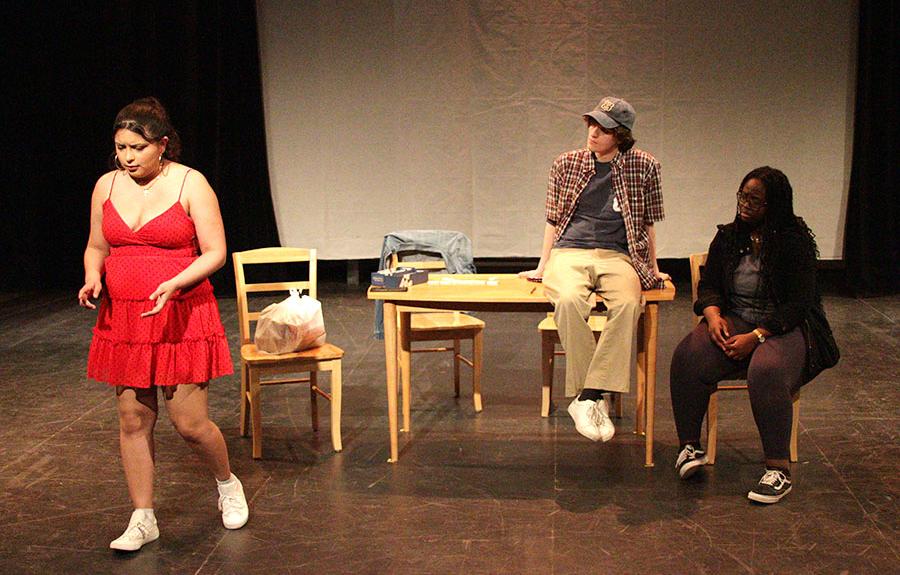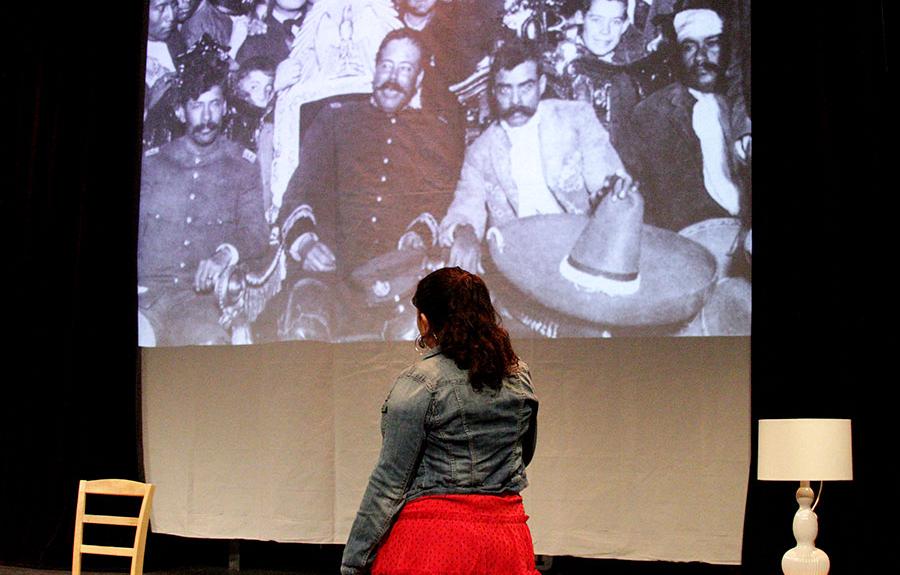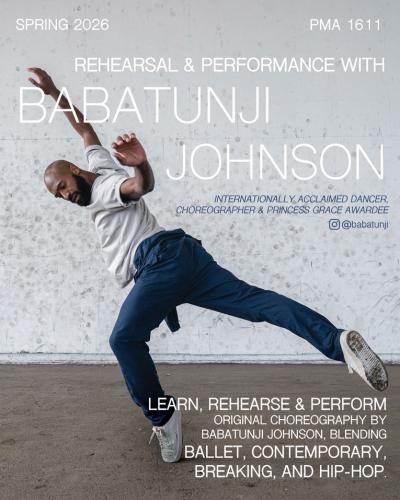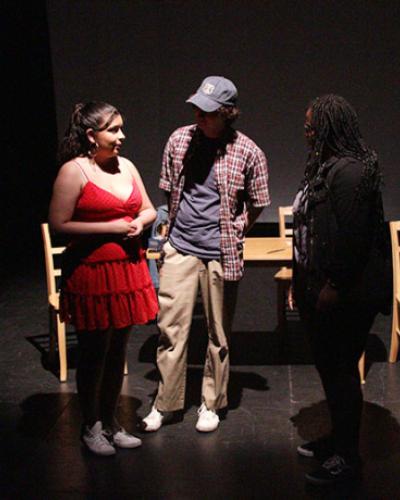A writer is encouraged to “write what they know” and offer their own perspective on the multi-faceted world. That may prove daunting, like it does to Maria, the protagonist of A Chicano’s Guide to Navigation, a one-act show which ran at the Black Box of the Schwartz Center March 24-26. It’s a meta-theatrical journey into what stories to include and how to structure a work about a Chicano identity that one may feel separate from, and about one’s experiences with technology and modernity, all for an audience that may have vastly differing backgrounds.
At the top, when lights are off and our phones are put away, Maria (played by Sofia Aguirre ’22) walks onto the stage while still immersed in her device. “Sorry about that.” she says after a while. “I know you shouldn’t be using this thing all the time, especially in a place like this, but if I don’t respond to my mom soon, she’ll never stop texting me.”
Maria is a version of John Colie ’23, playwright and co-director of the piece. “I was first inspired to write something when I heard about the Chicago police murdering Adam Toledo on March 29, 2021,” he says. “Maria’s narration and experience of a similar video was one of the first things I wrote; it was initially nothing more than a response to what had happened and a record of what I was thinking about at the time. As I thought more about the story and what form it should take, I continued writing it like a long monologue and address to the audience. The process of formulating and writing what became A Chicano’s Guide to Navigation took about nine months.”
Many insights occur on an artist’s journey that spans months. Two interesting moments happen when Maria plays songs: first “La Bamba” that people have usually heard, and then “That’s Right We’re That Spic Band” by Los Crudos, an American hardcore punk band from Chicago. “I added the playing of ‘La Bamba’ to the first scene right away, to break up the monotony of the long monologue,” says John. The other song came when most of the draft was written as a momentary change in tone, not necessarily an intended juxtaposition to “La Bamba,” but weaved into the narrative, the two make one think about how choices to represent a culture with a single work of art may influence our perception of said culture and either expand our understanding of it or play into existing stereotypes.
Enrique (Michael Ratzkin ’22) and Sylvia (Jenniviv Bansah ’23) are Maria’s friends who both challenge and encourage her.
Being both a writer and a director has its perks, but also its challenges. “I didn’t want to become so obsessed with my own expectations or experiences with the material that it would detract from what our actors brought through their portrayal,” John says. His co-director Aisling Mannion ’24 helped approach the material from a more abstract theatrical perspective, looking to see how the rhythm of each section could blend into the whole and generally providing a different point of view.
As an English and History major, John often gravitates to poetry for self-expression, but is interested in performing arts as a way to “turn the thoughts into a tangible work that others can encounter and be moved by.” Many of the plot points in the piece come from his actual family history, including his great-grandfather “purportedly fighting under Pancho Villa during the Mexican Revolution” and his uncle being stopped by Border Patrol after returning to Texas from Puerto Vallarta. “I had long been trying to include these in some sort of written work,” he mentions. As a work of fiction though, A Chicano’s Guide to Navigation is not autobiographical, nor does it strive to be. It is inspired by life, but not constrained by it.
“Look—there’s Villa, and there’s Zapata. And that guy on the left is my great grandfather Rodolfo,” shares Maria while showing us a picture on her phone.
Theater comes to life for a brief moment, but is fully alive then. A show may change from performance to performance as actors brings their present selves into it. One can view a work of theater as a constant work-in-progress, then, even when it’s “over.” When one submits a proposal for a PMA production season, it’s not a fully-fleshed vision of a finished work – it simply starts the journey of thinking about that work, its world and themes, and conceptualizing what it could become over the next year or so. That’s what an author’s process is – a process, that takes in a life but hopefully doesn’t overwhelm.
To John, A Chicano’s Guide to Navigation is one perspective on both the Mexican-American experience and the way social media shapes our interactions and communication with others. He hopes that it compels the audience members to explore their own perspectives on things that are important to them.
Photos by Jonathan Julio Mercedes







